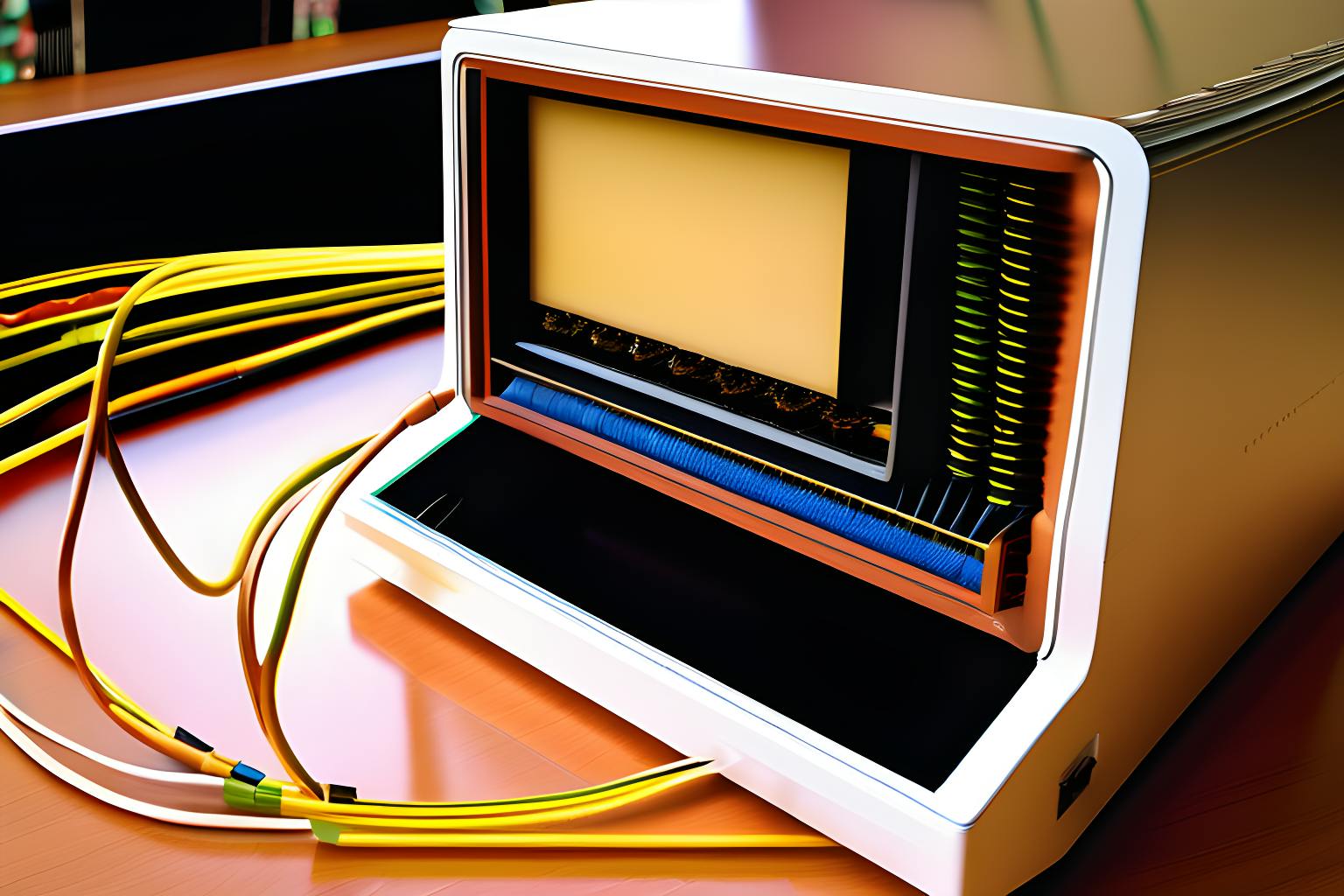United States Of America. v. Microsoft Corporation Court Filing by Thomas Penfield Jackson, November 5, 1999, is part of
4. Network Computers
24. A network computer system (sometimes called a “thin client”) typically contains central processing components with basic capabilities, certain key peripheral devices (such as a monitor, a keyboard, and a mouse), an operating system, and a browser. The system contains no mass storage, however, and it processes little if any data locally.
Instead, the system receives processed data and software as needed from a server across a network. A network computer system lacks the hardware resources to support an Intel-compatible PC operating system. It follows that software applications written to run on a specific Intel-compatible PC operating system will not run on a network computer.
Network computers can run applications residing on a designated server, however. Moreover, a network computer system typically can run applications residing on other servers, so long as those applications are accessible through Web sites. The ability to run server-based applications is not exclusive to network computer systems, however.
Generally speaking, any PC system equipped with a browser and an Internet connection is capable of accessing applications hosted through Web sites.
25. Since the network computing model relies heavily on the processing power and memory of servers, the requirements for the user’s hardware (and thus the price of that hardware) are low relative to those of an Intel-compatible PC system.
Still, a user who already owns a relatively expensive Intel-compatible PC system is not likely to abandon the investment and acquire less powerful hardware just because one of the least expensive components of his PC system — the operating system — is substantially more expensive than it would be under competitive conditions.
Just as does the Mac OS, the network computing model presents a somewhat more attractive alternative to the first-time computer buyer. But as in the case where a prospective purchaser is considering acquiring the Apple alternative, a new buyer considering the network computing model must choose between types of computer systems.
If the consumer opts for the less expensive hardware of the network computer, that hardware will not support an Intel-compatible PC operating system; and if the new buyer opts for the more expensive hardware of an Intel-compatible PC, an Intel-compatible PC operating system will almost certainly come pre-installed (and in any event represent very little additional cost relative to the price of the hardware).
26. Only a few firms currently market network computer systems, and the systems have yet to attract substantial consumer demand. In part, this is because PC systems, which can store and process data locally as well as communicate with a server, have decreased so much in price as to call into question the value proposition of buying a network computer system.
This fact would not change if the price of an Intel-compatible PC operating system rose significantly, because the resulting change in the price of an Intel-compatible PC system would be very minor.
Another reason for the limited demand for network computer systems is the fact that few consumers are in a position to turn from PC systems to network computer systems without making substantial sacrifices; for the network computing option exhibits significant shortcomings for current PC owners and first-time buyers alike.
The problems of latency, congestion, asynchrony, and insecurity across a communications network, and contention for limited processing and memory resources at the remote server, can all result in a substantial derogation of computing performance.
Moreover, the owner of a network computer is required to enter into long-term dependency upon the owner of a remote server in order to obtain functionality that would reside within his control if he owned a PC system.
If network computing becomes a viable alternative to PC-based computing, it will be because innovation by the proponents of the network computing model overcomes these problems, and it will happen even if Intel-compatible PC operating systems are priced at competitive levels. In any case, that day has not arrived, nor does it appear imminent.
Continue reading here.
About HackerNoon Legal PDF Series: We bring you the most important technical and insightful public domain court case filings.
This court case Civil Action No. 98-1232 (TPJ) retrieved on 1-19-2023, from justice.gov is part of the public domain. The court-created documents are works of the federal government, and under copyright law, are automatically placed in the public domain and may be shared without legal restriction.

